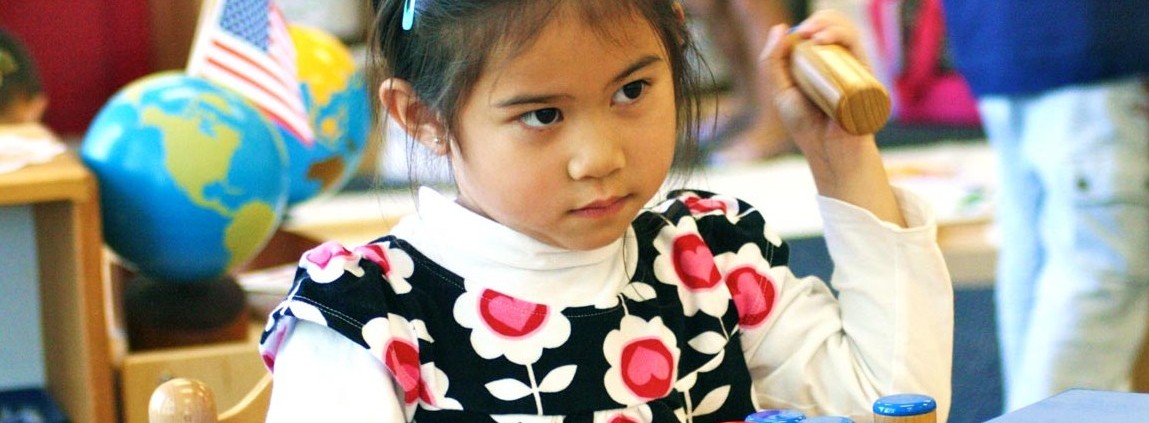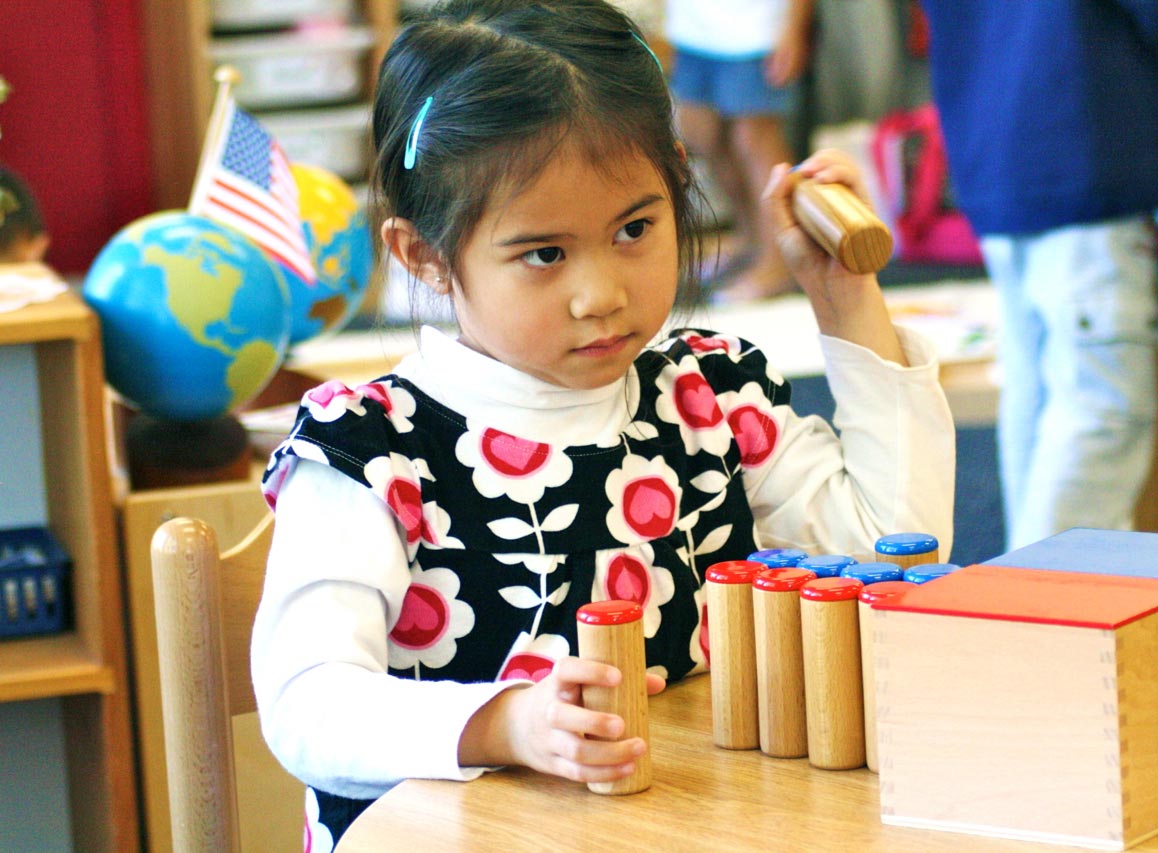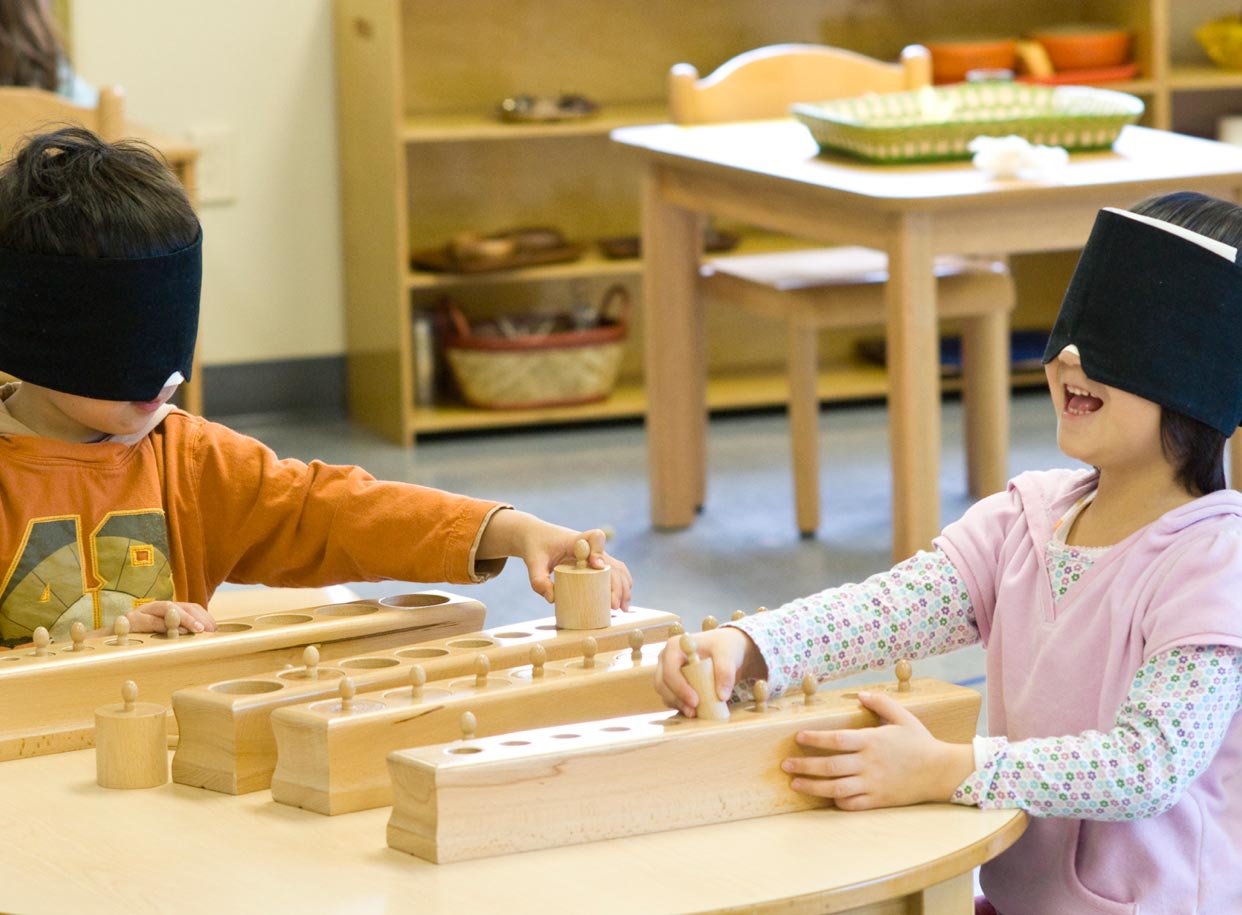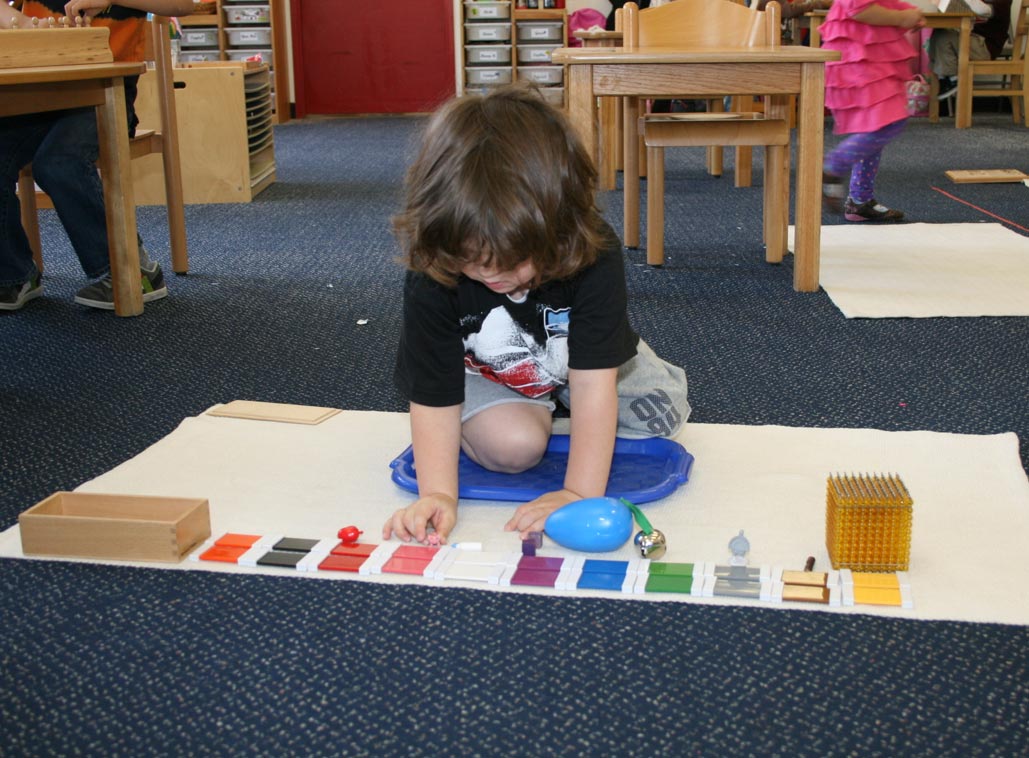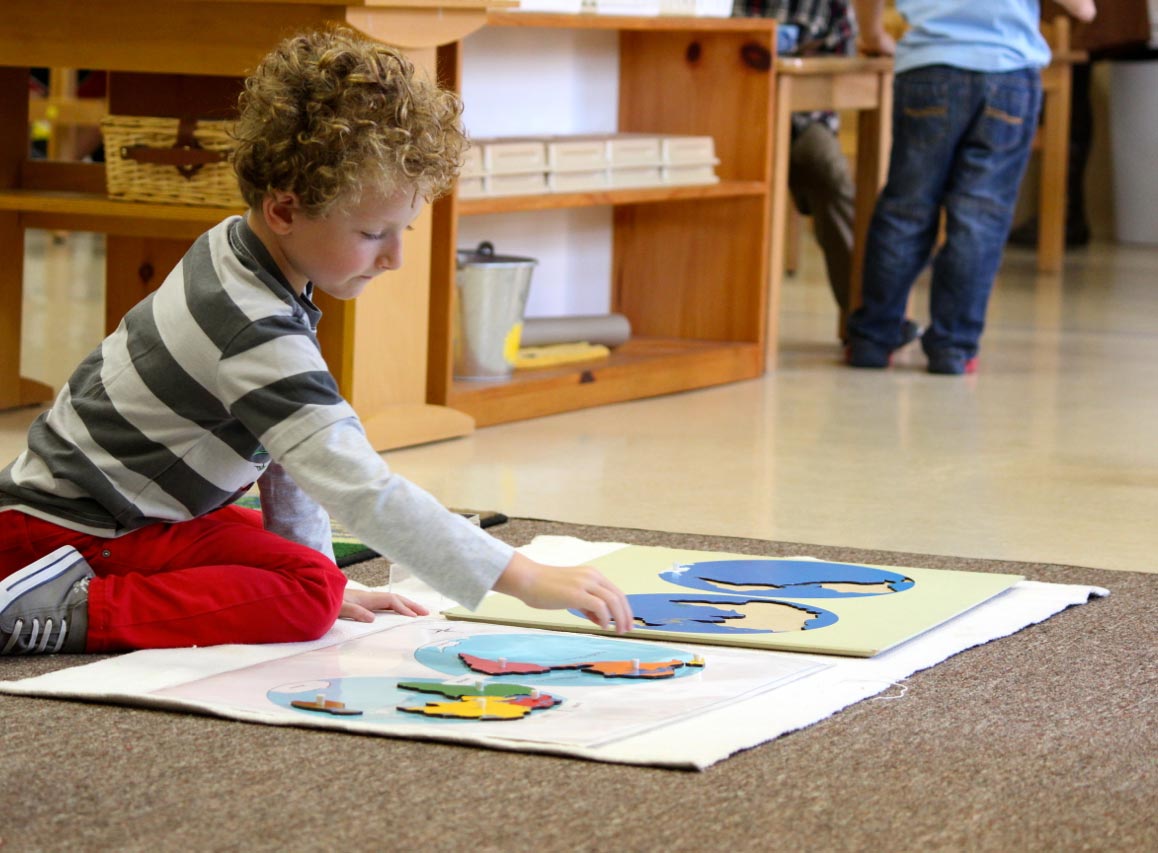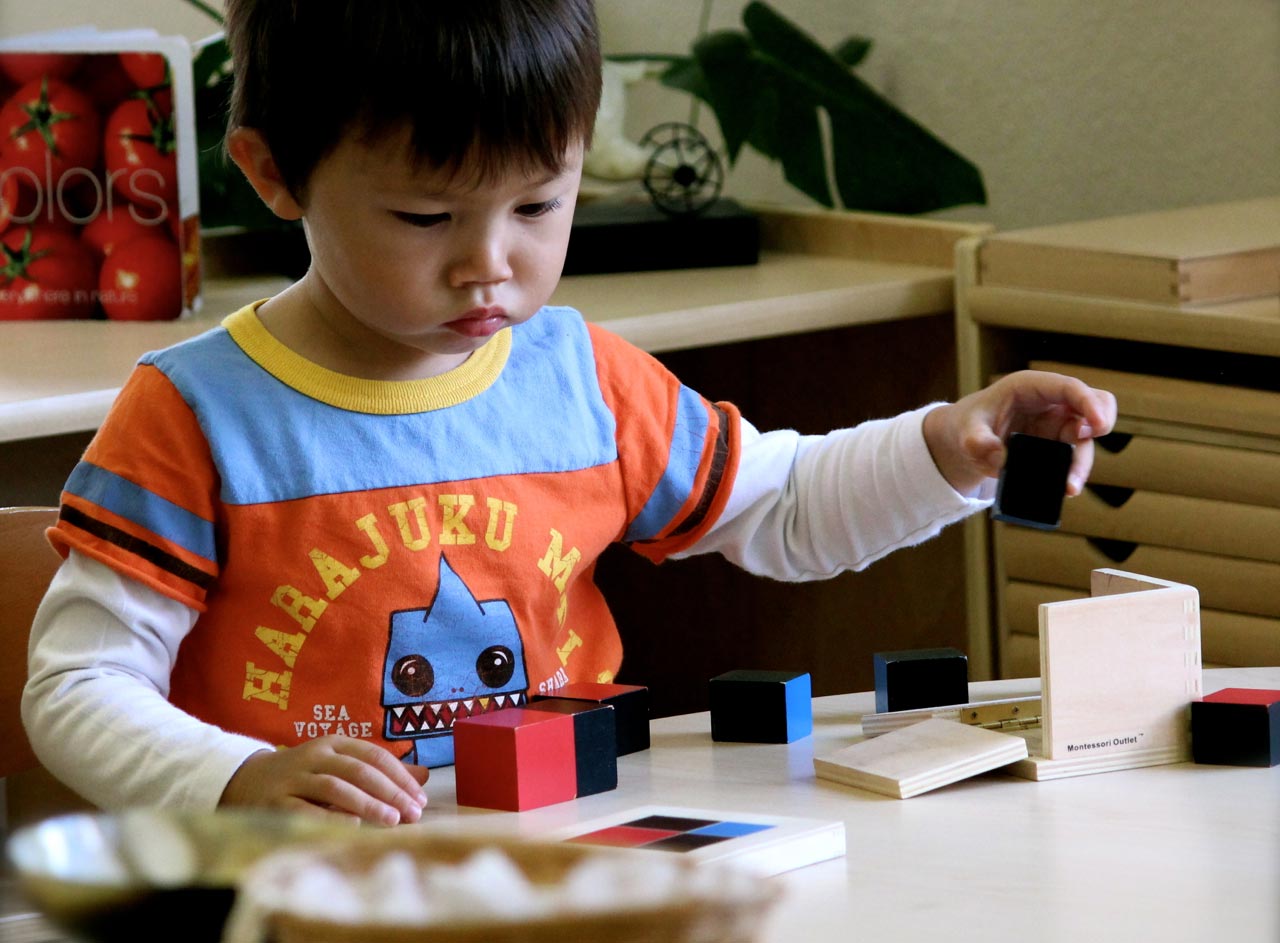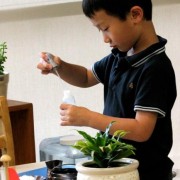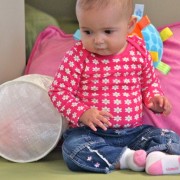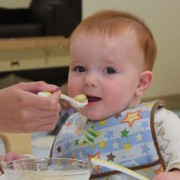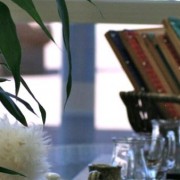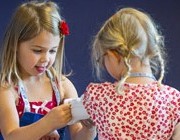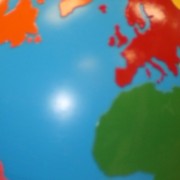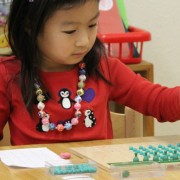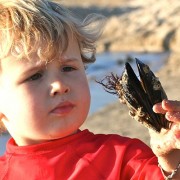The Sensorial Area in Montessori Preschool: Where Young Scientists Are Born
A preschool child is fascinated by the world around him: eager to explore it, always asking questions, constantly getting his fingers into everything. As he does so, he acquires a tremendous amount of information – about animals, people, plants, common household objects, etc. He makes observations at home, in the park, at the store, on vacation.
In the Montessori preschool environment, we help him organize his wealth of information into an orderly store of knowledge. We guide him to observe carefully and provide him with a systematic way of conceptualizing the world around him.
The Sensorialareaof a Primary (preschool/kindergarten) classroom is where this training happens. Children work with a range of materials, each of which varies in a single attribute; for example, the length of the Red Rods, the shade of each Color Tablet, the texture of the Fabrics, or the pitch of the Montessori Bells. In using these materials, children learn to observe carefully and to order, match, or sort objects by their attributes.
Each Sensorial material presents to the preschool child one special key to the world. Dr. Montessori conceptualized the idea of keys as a way of introducing significant aspects of this vibrant world we live in to the young child. Keys serve as jumping-off points for learning more about the world.
Work with the Sensorial materials also broadens a child’s vocabulary. Once a child has experience with a material, the Montessori teacher introduces the appropriate words to fix the new idea in the child’s mind: “This rod is the longest”, “Feel how smooth this silk is”, or “Listen how these two bells have exactly the same pitch.”
Preschool children spontaneously apply what they learn from the Sensorial materials. For example, a child who has practiced matching and grading the Color Tablets will naturally begin to notice things about color in his surroundings that he previously didn’t. It is not uncommon for Montessori preschool teachers to hear a 4-year-old remark things like, “That’s dark blue”, “This green is lighter than that green”, or “This grey matches that grey.” A child who has explored shapes from the Geometric Cabinet and has learned their names will start to identify shapes in objects around him (“That stop sign is an octagon!”), buildings (“Those windows are squares!”), even food (“The yolk is a circle!”).
If a child is unsuccessful with a Sensorial material, we do not correct him directly. Rather, we observe and note any errors, and re-present a lesson from start to finish at another time. We might offer a point of interest, a detail that is important for the child to grasp in order to get full benefit from a material. E.g. “Watch how I line up the Red Rods neatly along the edge of the rug as I order them.” As always, we then invite him to continue working with the material independently. The preschool child eventually learns to correct himself, as the control of error is often a combination of his own developing discrimination and the materials themselves. For example, with the Brown Stair, the child will experience visual disharmony if he sees that the stair is out of order.
There are formal games and extensions that are connected with every Sensorial material. With the Botany Cabinet, for example, the child learns not only to trace and recognize a variety of leaf shapes, but also to connect these to actual leaves he might collect on a nature walk. Once he is writing, he might enjoy creating booklets about the different kinds of leaves or, more broadly, other parts of a plant. The Puzzle Maps are a great example of work that extends throughout the Primary (preschool/kindergarten) years. For instance, initially the child simply learns how to put the United States puzzle pieces back properly in the frame. By his second year, he learns the names and locations of each state. By his third year in Primary, he might begin to create his own beautiful map of the United States, carefully tracing and cutting out each state, pasting them accurately on a large poster-sized paper, and proudly labeling each of them. A child is also welcome to make his own discoveries and variations. Perhaps he might recognize the similarity between the Pink Tower and Brown Stair, and build them side by side!
Beyond all of this, the Sensorial materials are significant in that they indirectly prepare the preschool child for later work in language and math.
Early Sensorial work, such as the Cylinder Blocks, indirectly prepares the child for writing and reading. As he uses his pincer, or three-finger, grip to grasp the knob of each cylinder, he strengthens and prepares his hand for holding a pencil. Touching rough sandpaper on the Rough and Smooth Boards will feel familiar to him when he traces his first Sandpaper Letter, the key Montessori preschool material for introducing the sounds and letters of our alphabet. Tracing geometric shapes as well as puzzle map pieces increase his fine motor control and precision of movement.
The Sensorial materials also prepare the child for math work in a variety of ways. Many Sensorial materials (just a few examples are the Pink Tower, Brown Stair, and Knobless Cylinders) are designed in series of ten, which reflects our base 10 number system. Several others provide a thorough introduction to geometric shapes, solids, and the unique, constructive properties of triangles. The Binomial and Trinomial Cubes are three-dimensional puzzles based on the binomial and trinomial equations, respectively. The Red Rods, of course, are a prerequisite for the red and blue Number Rods, which solidify a child’s grasp of quantity and his ability to count to ten with one-to-one correspondence.
Through sight, touch, taste, smell, and sound, the Montessori Sensorial materials provide opportunities for the child to classify and clarify the world around him. If you are a LePort Montessori preschool parent, we invite you to enjoy getting a closer look at these materials and to see them in action during your next Watch Me Work Wednesday visit!

